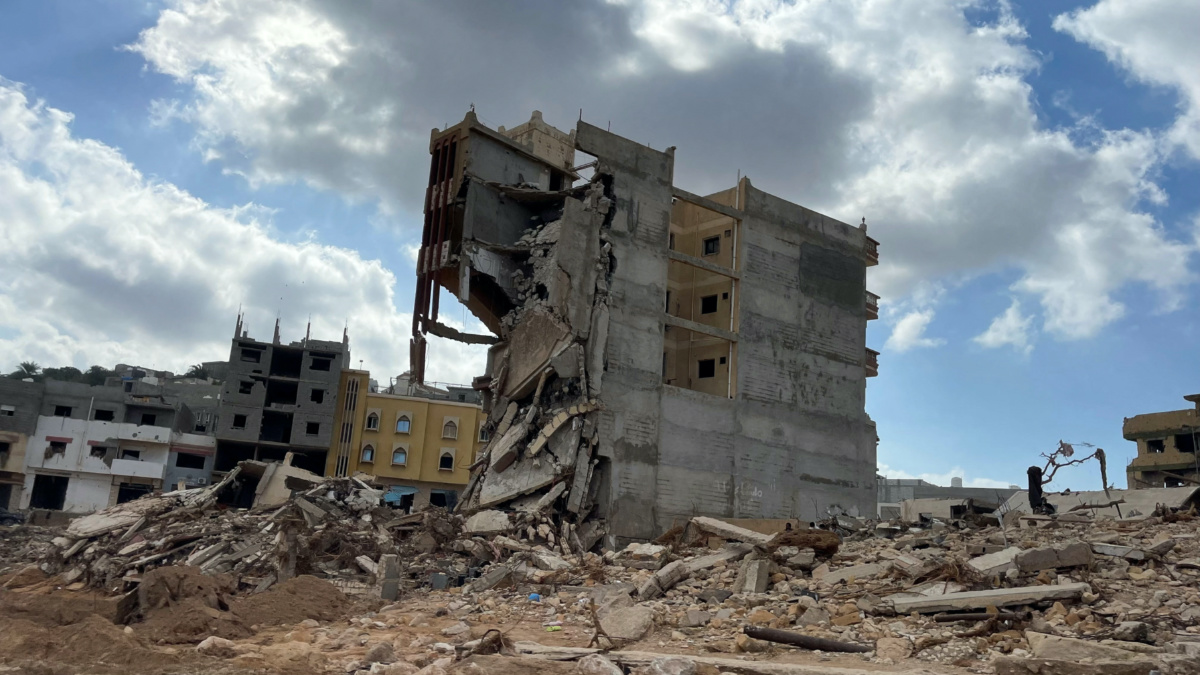Berlin, Germany
Reuters
Climate Change made the heavy rainfall that led to deadly floods in Libya up to 50 times more likely, scientists said on Tuesday.
The powerful 10th September storm caused two dams to break, inundating Libya’s eastern city of Derna and killing thousands of people. Residential blocks built along a typically dry riverbank toppled, as the swollen river undermined foundations.

A view shows destroyed buildings, in the aftermath of the floods in Derna, Libya, on 18th September, 2023. PICTURE: Reuters/Ahmed Elumami
Building in flood plains, poor dam condition, long-lasting armed conflict and other local factors played a role in the disaster.
But climate change caused up to 50 per cent more rain during that period, according to scientists with World Weather Attribution, an international research collaboration that works to determine how much climate change plays a role in specific weather events.
The scientists warned that as climate change pushes weather to new extremes, it would remain risky to build homes on flood plains or to use substandard materials.
“The interaction of these factors, and the very heavy rain that was worsened by climate change, created the extreme destruction [in Libya]”, the scientists wrote in a statement.
They used climate and computer simulations to compare weather events today with what they might have been if the climate had not already warmed by 1.2 degrees Celsius above the average preindustrial temperature.
Rainfall can increase or become more erratic with climate change, as a warmer atmosphere can hold more water vapour – allowing more moisture to build up before clouds finally break.
The “extremely unusual” storm event delivered 50 per cent more rain than it would have if there was no global warming, according to the scientists’ research. Such an event can be expected once every 300-600 years in the current climate, they said.
Meanwhile, climate change also caused up to a 40 per cent increase in the amount of rain that fell in early September across the Mediterranean, causing floods that killed dozens in Greece, Bulgaria and Turkey.
“The Mediterranean is a hotspot of climate change-fueled hazards,” said Friederike Otto, a climate scientist at the Grantham Institute for Climate Change and the Environment, citing heatwaves and wildfires in the region over summer.






